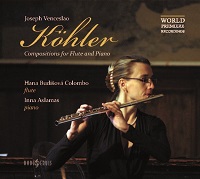Joseph Venceslao Köhler
(1809 - 1878)
Joseph Venceslao Köhler, born in Nové Město pod Smrkem (Neustadt an der Tafelfichte) in northern Bohemia, on September 11, 1809, was ranked among the foremost virtuoso flautists of the first half of the 19th century. He spent the larger part of his life in Modena, Italy, earning recognition there as a flautist and sought-after educator. More than a few of his Italian fellow-composers, including Cesare Ciardi, Vincenzo De Michelis or Luigi Hugues among others, dedicated works to him. Köhler’s talent, spontaneous and elegant style of interpretation, coupled with flawless technique and a staccato in which “he had no peer as regards distinctness and speed,” were noted all across Europe. Among the few players who could then compare to him were the Frenchman Louis Drouet, and the English virtuoso Charles Nicholson, both major figures of the world history of flute playing. Joseph Köhler was born into a German family. His father was a tailor, and the son was supposed to continue in the family tradition. As a twelveyear-old, after completing his basic schooling, he was sent to be apprenticed by a relative from whom, however, he soon fled, and shortly afterwards his father took him to Prague where he passed admission exams for study at the Conservatory. Receiving financial support from the Count Christian von Clam-Gallas, the young Köhler spent the first two years studying flute with Michael Januš, and the subsequent four years with Anton Eisler. He graduated from the Prague Conservatory in 1828. After the completion of his studies, Köhler was active as a music teacher and flautist. He played in various European orchestras, and in 1832 left for Modena where he obtained the post of principal flautist in the military band of the Duke Francesco IV D’Este. Apart from his work in the military band, he was also principal flautist in the Modena theatre company, and later on in the local court orchestra. |
In 1865, Köhler set out on a concert tour during which he revisited his birthplace after three decades of absence. He spent about three months in all in Bohemia, visiting his parents and relatives, and appearing in a string of concerts before local audiences. On his return trip to Italy, he made appearances in Prague, České Budějovice, Vienna, Graz, and Venice. In the course of his Italian career, Joseph Köhler began to use his second Christian name, Venceslao. In Modena he got married and had five children, one of whom died at a tender age, and another two, Ferdinando and Ernesto, carried on in the family musical tradition. Ferdinando was a pianist whose teachers included Bedřich Smetana in Prague, while Ernesto grew up to become one of the foremost figures of the history of flute playing.
Joseph Venceslao Köhler died on June 28, 1878, at 69, in Rothenturn, Austria, on a return journey from St Petersburg where he had gone to visit his son, Ernesto. He is buried in Molzbichl, in Carinthia.
Köhler’s compositional legacy is modest, and is devoted entirely to flute. Apart from a book of technical exercises and a short piece for solo flute, he wrote five compositions for flute and piano, four of which were published. These pieces are incontestably valuable, often posing considerable demands on the player’s technical skill. They are conceived in the Romantic virtuoso style, featuring original melodies inspired by bel canto. In technical passages, Köhler showed a penchant for imitations of violin (dyads, triads). Köhler would dedicate his works to his best pupils and fellow-flautists. Until recently, Köhler’s output has completely fallen into oblivion, and so has his personal history. Thanks to musicologists and students from the Istituto Musicale Orazio Vecchi in Modena who initiated, some years ago, detailed research into the life and work of the Bohemian-born flautist, we now know more about Köhler. The process has involved the rediscovery of several of his compositions (in autograph scores) whose existence was previously known only from entries in the historical catalogue of works in the Ghini Collection (named after Köhler’s pupil, the Marquess Ferdinando Ghini).
WORKS:
Grande fantasia Op.1
for flute and piano, reminiscenze on a theme from the opera of G. Donizetti "Lucia di Lammermoor"
Date: 1855–1858 Published by: Canti, Milano Modern edition: Vigor Music Edizioni Musicali, Italy, 2012, revision Hana Budišová
Introduction et variations de bravoure Op.2
for flute and piano
Date: 1855–1858 Published by: Canti, Milano Modern edition: work in progress
Carnevale di Venezia
Scherzo fantastico e capriccioso for flute and piano
Date: 1859 Notes: The Variations on Carnevale di Venezia are based on violin variations of H. W. Ernst instrumented for flute, Fahrbach’s (flute) variations, and original variations by J. V. Köhler Form: autograph score Modern edition: Vigor Music Edizioni Musicali, Italy, 2013, revision Hana Budišová
Ricreazione
for flute and piano on a theme from the opera of G. Verdi "Un ballo in maschera"
Date: 1860 Published by: Tito di G. Ricordi Modern edition: work in progress
Divertimento brillante
for flute and piano on a theme from the opera of G. Verdi "Un ballo in maschera"
Date: 1861–1863 Notes: the piano part was written in collaboration with the composer Isidoro Rossi Published by: Canti, Milano Modern edition: Vigor Music Edizioni Musicali,
Italy, 2013, revision Hana Budišová
Variazioni colla mano sinistra sopra un tema allemanno
(variations for left hand on a Germantheme) for flute solo
Date: unknown Form: autograph score Notes: autograph/copied by the Marquess Ghini; the composition has been attributed to Köhler, as the composition is listed without a name of the composer in the Ghini Collection catalogue (library of the Corelli Music Institute in Cesena) Modern edition: none
Scale in tutti i toni
(scales in all keys) – flute solo
Autograph score has not yet been found, its existence being documented in the Ghini Collection’s historical catalogue (library of the Corelli Music Institute in Cesena)
WORLD PREMIERE RECORDINGS WORLD PREMIERE RECORDINGS WORLD PREMIERE RECORDINGS WORLD PREMIERE RECORDINGS WORLD PREMIERE RECORDINGS
|
15 € |
Reminiscenze for flute and piano Ricreazione for flute and piano Carnevale di Venezia. Scherzo fantastico e capriccioso Introduction at variations de bravoure © 2013 Radioservis, a.s. |
|---|
WORLD PREMIERE RECORDINGS WORLD PREMIERE RECORDINGS WORLD PREMIERE RECORDINGS WORLD PREMIERE RECORDINGS WORLD PREMIERE RECORDINGS
NEW EDITIONS
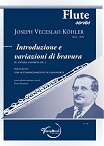 |
Introduzione e variazioni di bravura Op.2 |
|---|---|
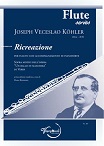 |
Ricreazione |
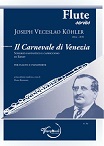 |
Il Carnevale di Venezia |
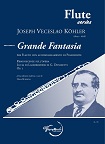 |
Grande Fantasia Op. 1 |
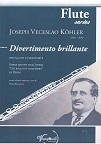 |
Divertimento brillante |
